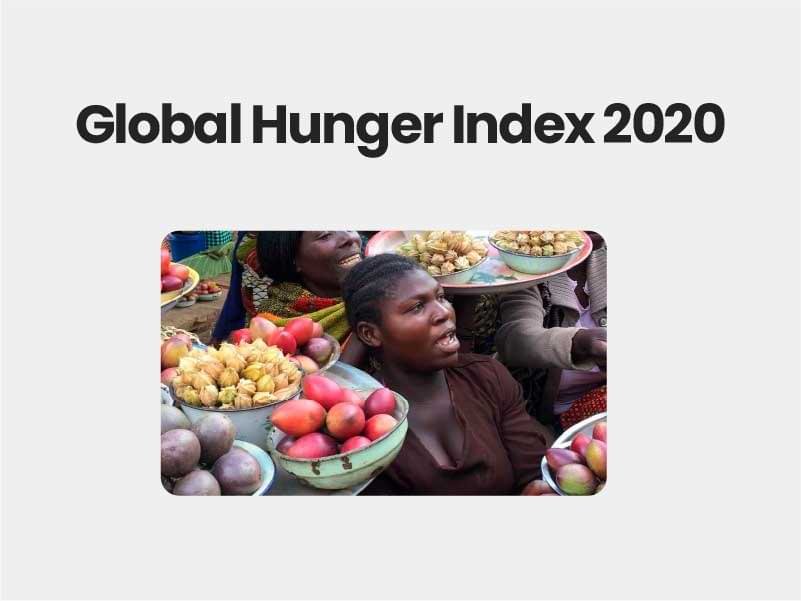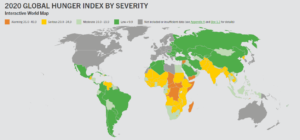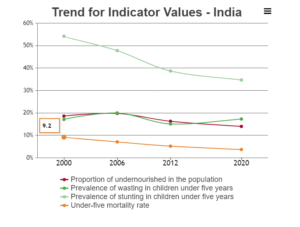
Global Hunger Index 2020
The Global Hunger Index (GHI) is a tool for measuring hunger at global, regional, and national levels. GHI scores are based on the values of four component indicators:
- undernourishment
- child wasting
- child stunting
- child mortality
Based on the values of the four indicators, the GHI determines hunger on a 100-point scale where 0 is the best possible score (no hunger) and 100 is the worst. Each country’s GHI score is classified by severity, from low to extremely alarming
GHI is a joint project of Welthungerhilfe and Concern Worldwide. The GHI is calculated annually, and its results appear in a report issued in October each year
Key Findings
- Worldwide hunger is at a moderate level.
- Africa South of the Sahara and South Asia have the highest hunger and undernutrition levels among world regions
- 2020 GHI scores do not reflect the impact of Covid-19 on hunger and undernutrition.
Indian Scenario
India has a level of hunger that is “serious”( score of 27.2)
Indias GHI in 2020 & 2019
| Year | 2020 | 2019 |
| Rank | 94 | 102 |
| Total Countries | 107 | 117 |
India features behind Nepal (73), Pakistan (88), Bangladesh (75), Indonesia (70) among others Out of the total 107 countries, only 13 countries fare worse than India including countries like Rwanda (97), Nigeria (98), Afghanistan (99), Liberia (102), Mozambique (103), Chad (107) among others.

Why India ranked so low on GHI?
India was able to reduce under-five mortality rate drastically, but that alone is not sufficient to reduce the hunger problem in India. India’s child wasting has actually gone up over these years. High prevalence of Stunting and malnutrition among under-five children.
Though India have surplus food, most small and marginal holdings farmers are losing access to food. The reasons for hunger in India can be summarised as follows
- The agriculture output from small and marginal holdings are either stagnant or declining.
- The relative income of one section of people has been on the decline.
- lack of income opportunities other than farm sector has contributed heavily to the growing joblessness in rural areas
- poor implementation and accessibility of Public Distribution Systems.
- The soiled approach in tackling malnutrition
- Lack of safe drinking water, which results in acute malnutrition
- Certain illnesses and infections, such as tuberculosis, measles, and diarrhea are directly linked to acute malnutrition

- In 30 years, the number of natural disasters — droughts, cyclones, floods, etc. — linked to climate change has increased substantially. This results in decline in agricultural production either directly or indirectly
Initiatives by Government of India
- Mission Indradhanush
- Integrated Child Development Services (ICDS) Scheme
- National Food Security Act, 2013
- Pradhan Mantri Matru Vandana Yojana:
- POSHAN Abhiyaan
- MNREGA
- National Health Mission (NHM)
- Mid Day Meal (MDM) scheme
- Annapurna Scheme etc
Enroll today with the best civils service academy and take your first step towards your Civils journey.
Feel free to reach out to us for any inquiries, collaborations, or support. We’re here to help.

